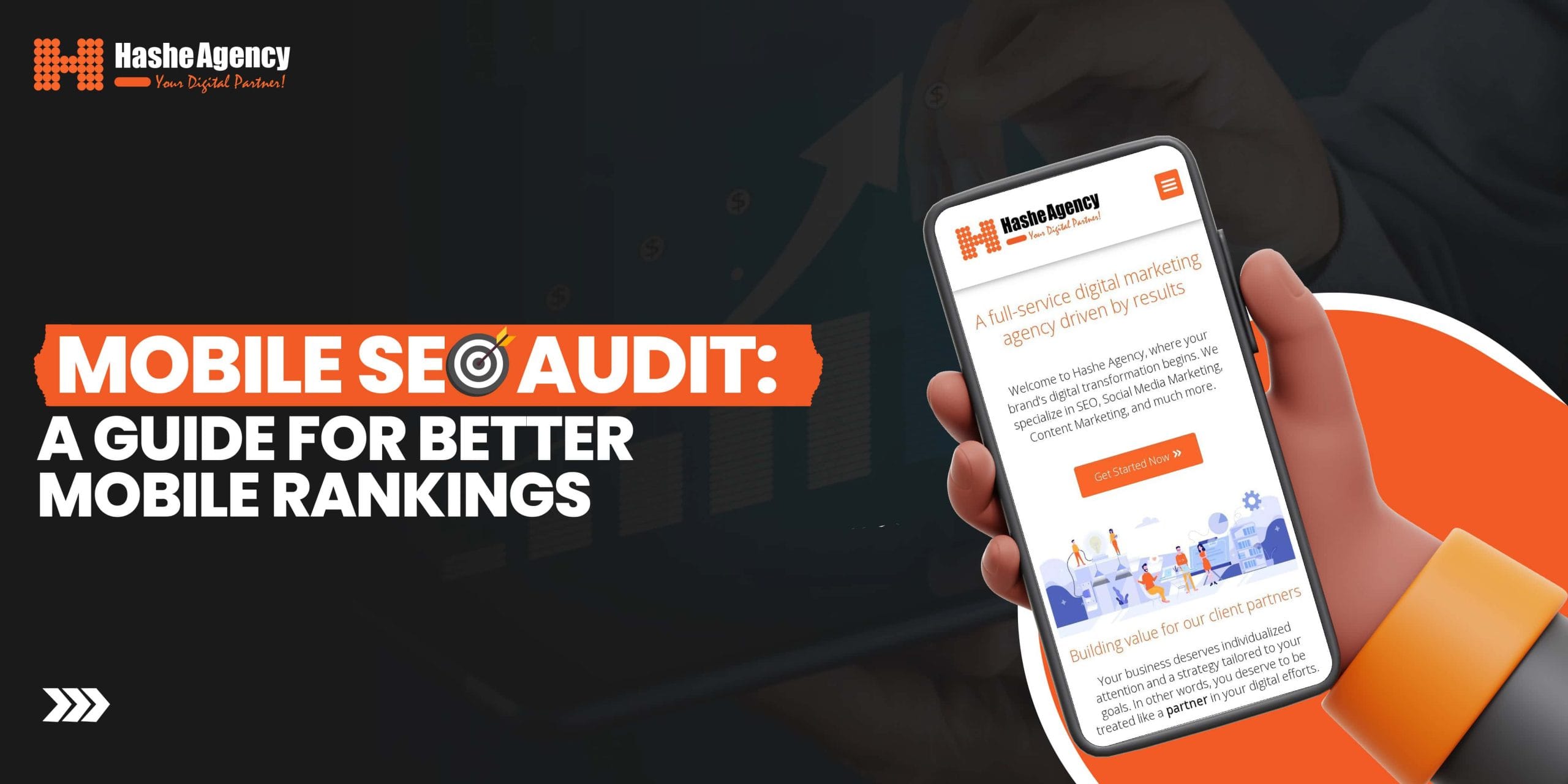People are more inclined towards using smartphones to surf the web than on desktop computers. Therefore, it has become an absolute necessity to make your business website mobile-friendly and provide a good user experience to your audience.
However, to achieve this, you need to conduct a mobile SEO analysis. So, if you are interested to learn more about mobile SEO audits, this blog is for you.
In this blog, you’ll get to know what a mobile site audit is, especially in comparison to a more general audit, and how to perform a mobile SEO audit. The goal is to help you spot mobile seo problems that could impede your user experience or rankings and guide you to take corrective action.
So, let’s get into it!
What is a mobile SEO audit?
Mobile SEO refers to optimizing a website to get it ranked higher in search engine results pages (SERPs) on mobile devices, like tablets, and smartphones. In today’s digital world, it has become critical to get your websites mobile optimized as more and more people are using their mobile devices to access the internet and search for information.
How to Perform a Mobile SEO Audit?
1. Do a Site Crawl
Crawling a website is the foundation of an SEO audit. Mobile SEO audits require specific attention to issues that impact user experience on smaller screens, such as:
- Viewport configuration – It is critical to ensure that the viewport tag is correctly configured so your content is proportionate to the mobile screens.
- Touch target sizes – Check that links and buttons have sufficient size and spacing to allow easy tapping.
- Content size – Find pages with content larger or smaller than the viewport width.
- Mobile meta tags – Evaluate your meta descriptions and title tags to ensure they are within the character limits of mobile search results.
Sitebulb and Screaming Frog are both great tools to check for technical SEO issues affecting mobile users.
2. Check Your Mobile Design
There are several ways of adjusting your design for mobile devices. However, the most recommended and common way is to use responsive design which allows the users to encounter the same website and the content automatically resizes to fit any screen.
3. Analyze Your Website Performance
A fast-loading website is crucial for good mobile SEO. Visitors expect websites to load quickly be it on desktops, mobile screens, or tablets. This makes speed an integral part of page experience and mobile SEO rankings.
4. Learn What Devices Your Audience Is Using
It is critical to understand which devices your users are using to view your site to gain valuable insights into where to focus your optimization efforts. Google Analytics can provide you with this information by providing an overview of your site’s users’ operating systems, its share of mobile traffic, screen resolutions, and browsers.
Moreover, you can further drill down into this data to find out OS versions, and the exact device models, and cross-reference this information with each other.
5. Compare Mobile and Desktop Traffic
You can use Google Analytics to compare your traffic coming from mobile devices and desktops. This will help you to potentially identify issues that affect your mobile visitors that you haven’t noticed before.
6. Examine User Behavior
Google Analytics also provides you with detailed information about what users tend to do on your site and how well they engage with your content on smaller screens such as mobile screens.
7. Compare Click-Through Rates
Click-through rate (CTR) refers to the share of people who click on your website’s links in Google as they appear in search engines as a part of their search results. You can easily compare your site’s mobile and desktop CTR by setting up the comparison filter and checking the box.
If there is a huge difference, chances are high that your pages don’t look attractive in mobile search results and it could be because of the missing structured data, cut-off title, or similar problems.
8. Do a Content Audit
Mobile users skim content therefore it is crucial to ensure that your web pages are easy to consume and are navigable on smaller screens. Here’s what to consider:
- Show important content first – Visitors don’t want to scroll too far as they are mostly impatient, so make sure to arrange the important information on the top.
- Be concise – Avoid extra details to get to the point quickly.
- Optimize content structure – Use headings, bullet points, and lists to make content scannable and break up long paragraphs.
You can start auditing your web pages in the order of significance and can work your way down. You can also use Google Analytics’s average engagement time as an indicator of what content needs to be improved first.
Conclusion
In conclusion, conducting a mobile SEO audit is crucial to ensure that your website meets the needs of the mobile-first web environment. It helps you understand your site’s user experience on smartphones and how it performs in mobile search results. You can use this information to make positive changes.
Moreover, you should never neglect the page loading speed of your website because speed is another key factor in ranking. If this seems too much for you, you can always consult experts at Hashe Agency.
We have a team of SEO professionals that can help you achieve your SEO goals sooner than you think. So, what are you waiting for? Reach out to us for more information and get ready to explore how we can make your site mobile friendly.





